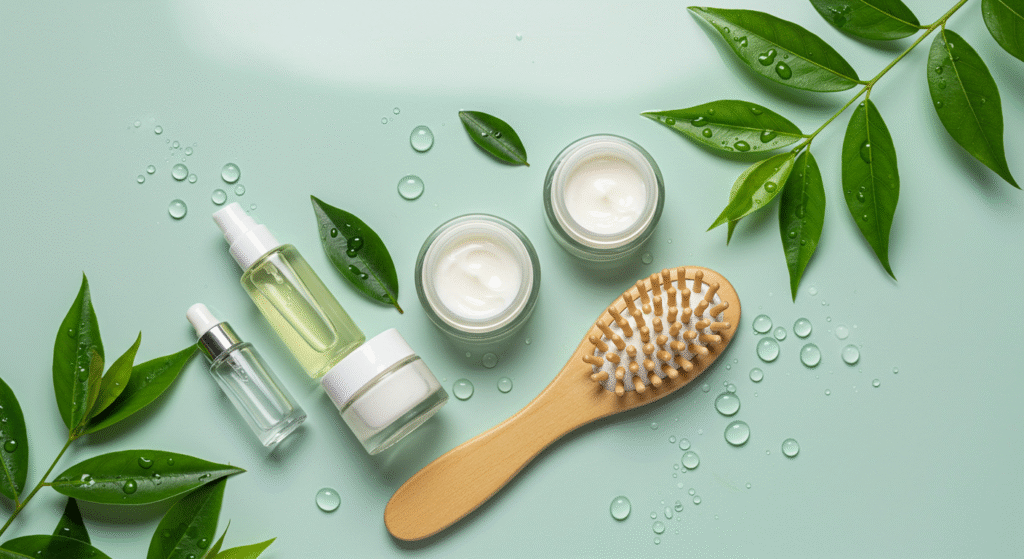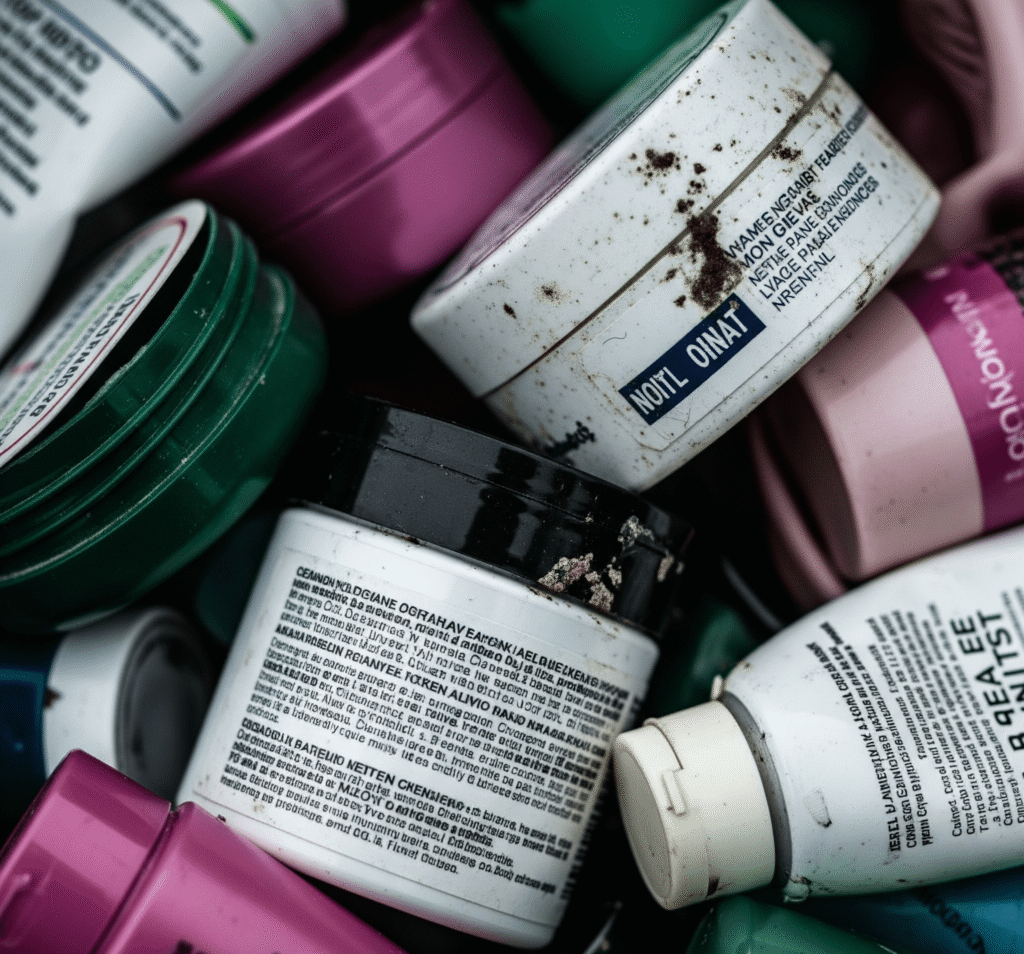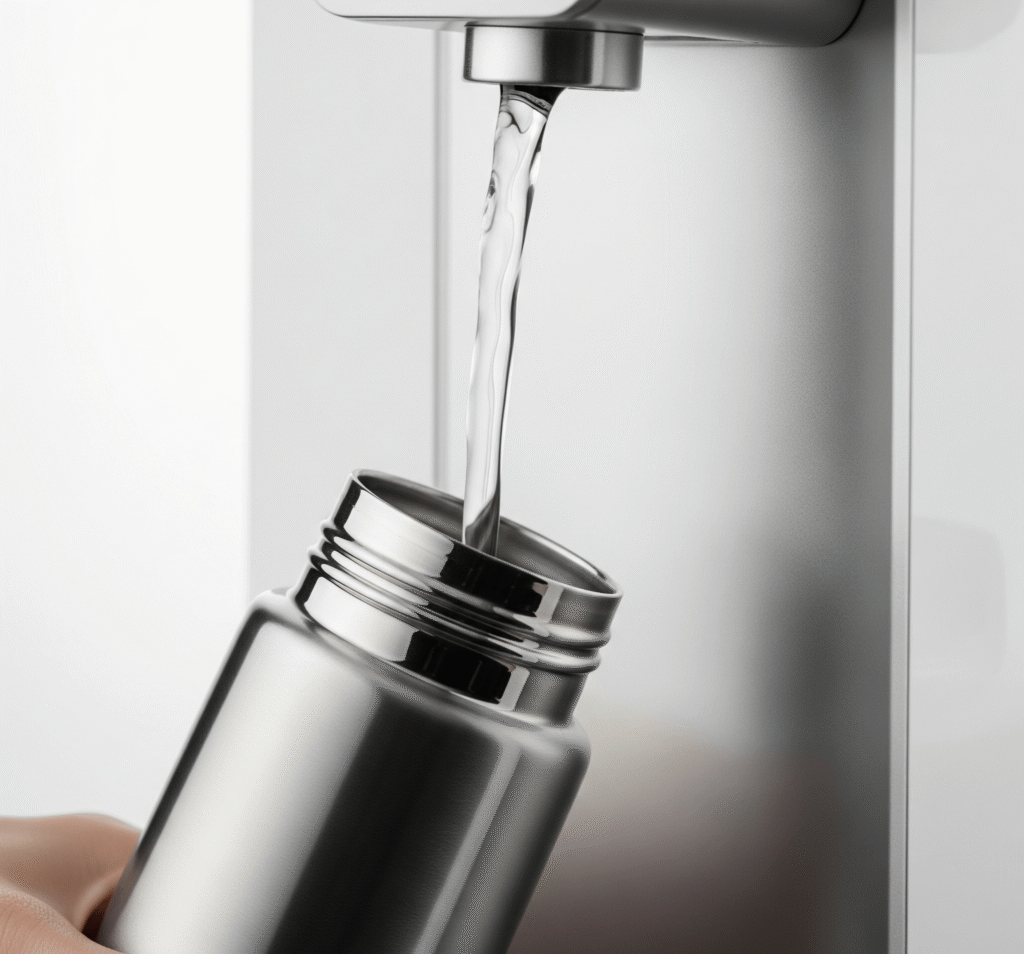As we mark World Environment Day on June 5th, with its vital theme of ‘Beat Plastic Pollution,’ it’s a perfect moment to consider how our daily habits, especially in sustainable skincare and wellness, impact our planet. While beauty and self-care bring joy, the vast amount of plastic packaging they generate contributes significantly to a global environmental challenge.
This article provides straightforward information and actionable advice on making more sustainable choices in your skincare and wellness routine, based on current research. It is important to remember that this content is for general informational purposes and should not replace advice from environmental experts or healthcare professionals.

Understanding the Plastic Problem in Beauty & Wellness
Plastic pollution is a growing concern that affects our ecosystems and potentially our health. Globally, an estimated 19-23 million tonnes of plastic waste leak into aquatic ecosystems annually, polluting lakes, rivers, and seas. (UNEP, 2025). This plastic breaks down into tiny pieces called microplastics (less than 5mm in size) and even nanoplastics (even smaller, less than 1 micrometer).

Why are Microplastics a Concern?
These tiny plastic particles have been found almost everywhere: from the deepest oceans to remote mountain peaks, and alarmingly, within the human body. According to the United Nations Environment Programme (UNEP, 2025), microplastics can enter the human body through ingestion of contaminated food and water, inhalation from the air, and even absorption through the skin.
While research on their direct long-term health effects in humans is ongoing, early studies have raised concerns:
- A 2019 study suggested adults could consume between 39,000 to 52,000 microplastic particles a year on average.
- A 2024 review of Journal of Global Health research has found microplastics in parts of the human body like the lungs, stomach, and even in breastmilk and urine. These tiny plastic particles can enter our bodies through the air we breathe and the food and water we consume.
- Some studies suggest potential links between microplastic exposure and inflammation, changes to the gut microbiome, and even increased risk factors for conditions like heart attack
- A major report by the Endocrine Society and IPEN warns that plastics release chemicals called endocrine disruptors, which can cause serious problems like cancer, diabetes, and issues with growth, development, and fertility.
- Understanding these risks highlights why reducing plastic, especially single-use plastic, is so important.
Simple Steps for a More Sustainable Routine
Making your sustainable skincare and wellness routine eco-friendlier doesn’t require a complete overhaul. Small, thoughtful changes can collectively make a big difference.
1. Opt for Refillable Packaging
Many leading sustainable skincare and wellness brands are now offering products in reusable containers that can be refilled.
How it helps: Refillable systems can significantly reduce packaging waste. A 2021 study by the Netherlands Institute for Sustainable Packaging found that a reusable aluminum bottle paired with shampoo concentrate became more eco-friendly than a single-use plastic bottle after just three refills, continually saving CO2 emissions and cutting down on waste with every additional refill.
What to look for: Brands offering “refill pods,” “refill systems,” or products in durable, long-lasting containers designed for multiple uses.
Related: Zero-Waste Skincare Routine: Eco-Friendly Beauty for Conscious Consumers

2. Choose Solid Products
Think outside the bottle! Solid versions of common liquid products like shampoo, conditioner, body wash, and even facial cleansers are excellent for reducing plastic waste and supporting a more sustainable skincare approach.
What to look for: Shampoo bars, conditioner bars, solid cleansers, solid lotions, and deodorants in cardboard tubes.
How it helps: Solid bars often come in minimal or compostable packaging (like paper or cardboard), eliminating bulky plastic bottles. They are also highly concentrated, meaning they can last much longer than their liquid counterparts, which are often up to 90% water. This concentration also means less weight and energy needed for shipping.

3. Prioritize Glass & Aluminum Packaging
While not always completely plastic-free (due to caps or pumps), glass and aluminum are highly recyclable materials.
- How it helps: Unlike plastic, which degrades in quality with each recycling cycle, glass and aluminum can be recycled infinitely without losing their integrity. This makes them excellent choices for a circular economy.
- What to look for: Skincare products in glass jars or bottles, aluminum tubes, or metal tins. Remember to check local recycling guidelines for proper disposal.
4. Look for Post-Consumer Recycled (PCR) Plastic
When plastic packaging is unavoidable, choose products made from Post-Consumer Recycled (PCR) plastic.
- How it helps: PCR plastic is made from plastic that has already been used and recycled by consumers. Choosing PCR reduces the demand for brand-new, or ‘virgin,’ plastic production, thereby lessening reliance on fossil fuels and diverting waste from landfills and oceans.
5. Be Mindful of Ingredients (Avoiding Microbeads & Microplastics)
- How it helps: While many countries have banned plastic microbeads (tiny plastic beads found in some exfoliating scrubs), other synthetic polymers can still be found in various beauty products and contribute to microplastic pollution when rinsed down the drain. Choosing products with natural exfoliants (like sugar, salt, or jojoba beads) or avoiding excessive ‘rinse-off’ products can make a difference.
6. Extend Sustainability to Wellness Habits
Your commitment to reducing plastic can go beyond your bathroom cabinet:
- Reusable Water Bottles & Coffee Cups: A simple switch that saves countless single-use plastics.
- Loose Tea & Bulk Foods: Opt for unpackaged produce and bulk items whenever possible to reduce food packaging.
- Eco-Friendly Menstrual Products: Consider reusable options like menstrual cups or washable pads.
Decoding Greenwashing: Shop Smart, Not Just Green
The rise of environmental awareness has unfortunately led to “greenwashing,” where companies mislead consumers into believing their products are more environmentally friendly than they truly are.
How to Spot Greenwashing:
- Beware of Vague Claims: Terms like “eco-friendly,” “natural,” or “sustainable” without specific details or certifications can be misleading.
- Look for Third-Party Certifications: Independent certifications (e.g., B Corp, Ecocert Cosmos, Leaping Bunny) signify that a product or company has met specific environmental or ethical standards.
- Check Transparency: Reputable brands will openly share information about their ingredient sourcing, manufacturing processes, and packaging materials on their websites.
- Examine the Whole Product, Not Just the Packaging: Some brands might use “green” packaging but still have unsustainable ingredients or production methods.
- Research Key Ingredients: Be cautious of claims that products are “paraben-free” or “sulfate-free” if they’ve simply replaced these with other potentially harsh or unsustainable chemicals.
Your Contribution Matters
This World Environment Day, and every day, your choices in sustainable skincare and wellness can be a powerful force in the fight against plastic pollution. By choosing consciously, researching thoroughly, and supporting genuinely sustainable brands, you contribute to a healthier planet for everyone.
What steps are you taking to make your skincare and wellness routine more sustainable? Share your insights and tips in the comments below!
Discover more from The Healthcare Diary
Subscribe to get the latest posts sent to your email.